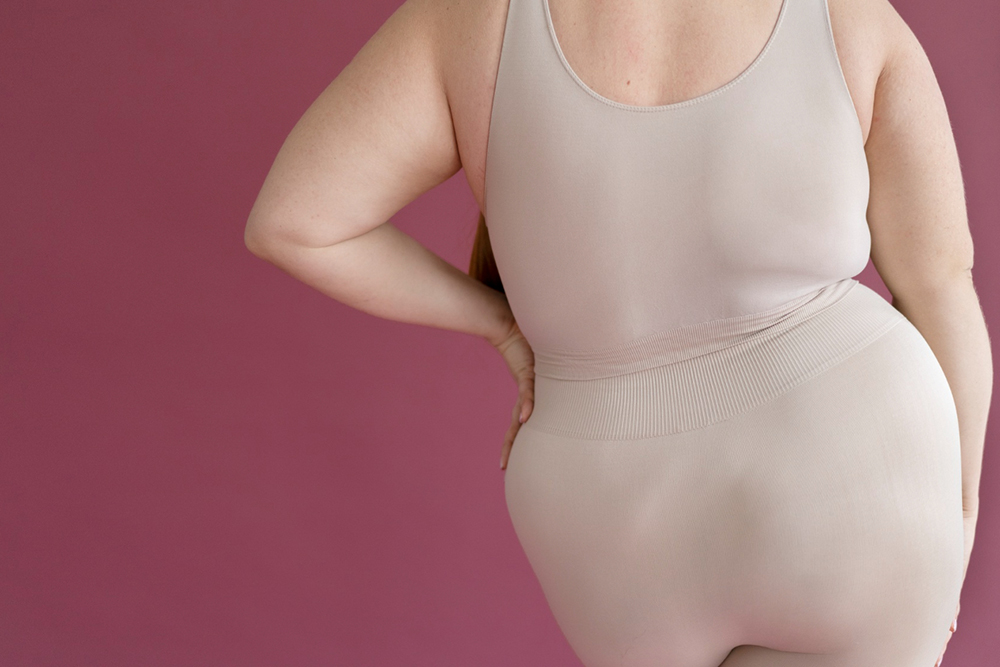The Benefits of Compression Therapy for Lipedema

Living with lipedema can feel frustrating and challenging, especially when the condition progresses. This chronic disorder of fat tissue, often misdiagnosed or misunderstood, leads to significant swelling and discomfort in the limbs. While treatments like lipedema liposuction are becoming increasingly popular for managing symptoms, compression therapy remains a foundational, non-invasive solution.
This blog explores how compression therapy can help manage lipedema symptoms, enhance your quality of life, and complement surgical treatments like liposuction.
Whether you're newly diagnosed or weighing your treatment options, here's a closer look at why compression therapy is a key first step in the management of lipedema.
What Is Compression Therapy?
Compression therapy involves wearing specially designed garments or wraps that apply consistent pressure to affected areas of the body. These garments, often made from elastic materials, encourage better circulation, reduce swelling, and support the lymphatic system.
For individuals with lipedema, this therapy offers a non-invasive way to manage symptoms while also preparing for or recovering from liposuction treatments.
Why Is Compression Therapy Crucial for Lipedema Management?
Compression therapy is not just a popular treatment for lipedema—it’s often recommended by healthcare providers for its wide-ranging benefits. Here's why it makes a difference for those living with lipedema.
1. Reduces Pain and Discomfort
Lipedema is notorious for causing pain and tenderness in the affected areas. The consistent pressure from compression garments can help alleviate this discomfort by reducing inflammation and offering additional support to sensitive tissues.
2. Limits Swelling (Edema)
Lymphatic swelling, or secondary lymphedema, often accompanies lipedema as the disease progresses. Compression therapy helps regulate fluid buildup by encouraging lymphatic flow, keeping the swelling under control.
3. Improves Mobility
Excess fat and swelling around the legs or arms can make movement difficult or energy-draining for people with lipedema. The support provided by compression garments can make walking, climbing stairs, or even standing more manageable, improving your overall mobility.
4. Slows Disease Progression
While compression therapy is not a cure, it can slow down the progression of lipedema by maintaining proper drainage of lymphatic fluids and reducing the strain on vascular systems.
5. Prepares the Body for Advanced Treatments
For individuals planning surgical interventions like lipedema liposuction, compression therapy acts as a preparatory and supportive measure. By reducing swelling and promoting better circulation, it creates optimal conditions for recovery.
6. Enhances Post-Surgical Recovery
If you've undergone lipedema liposuction, continued use of compression garments during recovery helps reduce post-operative swelling, supports healing tissues, and minimizes the development of scar tissue.
Getting Started with Compression Therapy
Although compression therapy is straightforward, it’s important to follow some guidelines to maximize its effectiveness.
Step 1: Consult an Expert
Before purchasing garments, consult a healthcare provider or a specialized therapist who understands lipedema. They can help guide you toward the right type of compression (flat-knit or circular-knit) and ensure you select the appropriate compression level.
Step 2: Invest in Quality Compression Garments
Not all compression garments are created equal. Look for high-quality products that fit your needs. Some popular brands specialize in garments specifically for lipedema use, offering tailored designs that ensure both comfort and effectiveness.
Step 3: Develop a Consistent Routine
Consistency is key with compression therapy. Aim to wear your garments daily, following the schedule recommended by your provider. Using compression therapy sporadically may limit its ability to reduce symptoms effectively.
Step 4: Combine Compression with Other Treatments
For the best results, integrate compression therapy with other supportive measures like lymphatic drainage massage, low-impact exercises, and anti-inflammatory diets. These complementary treatments can help manage symptoms holistically.
Is Compression Therapy Enough?
Although compression therapy offers extensive benefits, it may not be enough in advanced cases of lipedema. Many individuals eventually choose to undergo lipedema liposuction, particularly when other treatments no longer provide relief or when mobility becomes severely impacted.
If you're considering lipedema liposuction, it’s important to view compression therapy as a complementary, rather than standalone, treatment. Combining these methods ensures a more comprehensive approach to managing both the physical and emotional challenges of this condition.
Why Lipedema Liposuction Is a Game-Changer
For those whose lipedema has progressed significantly, liposuction can be life-changing. While compression therapy manages symptoms, liposuction reduces abnormal fat deposits and improves mobility.
The benefits of lipedema liposuction include:
- Long-term reduction in pain and swelling.
- Improved proportion and aesthetic appearance of affected areas.
- Enhanced physical mobility and daily comfort levels.
- A positive psychological impact as patients regain confidence.
However, remember that proper preparation—including consistent use of compression garments—plays a critical role in ensuring a smooth recovery.
Next Steps Toward Managing Lipedema
Compression therapy is an essential pillar for managing lipedema symptoms and achieving better mobility and comfort. From reducing pain to enhancing post-surgical recovery, compression serves as both a standalone treatment and a supportive adjunct to lipedema liposuction procedures.
If you’re considering advanced treatments like liposuction, the team at Byrd Lipedema Surgery Center can guide you through every step of the process. From initial consultations to specialized surgical care and post-op support, we’re here to help you find relief and regain your quality of life.
Take charge of your health today! Contact Byrd Lipedema Surgery Center to schedule a consultation and explore whether lipedema liposuction is right for you.